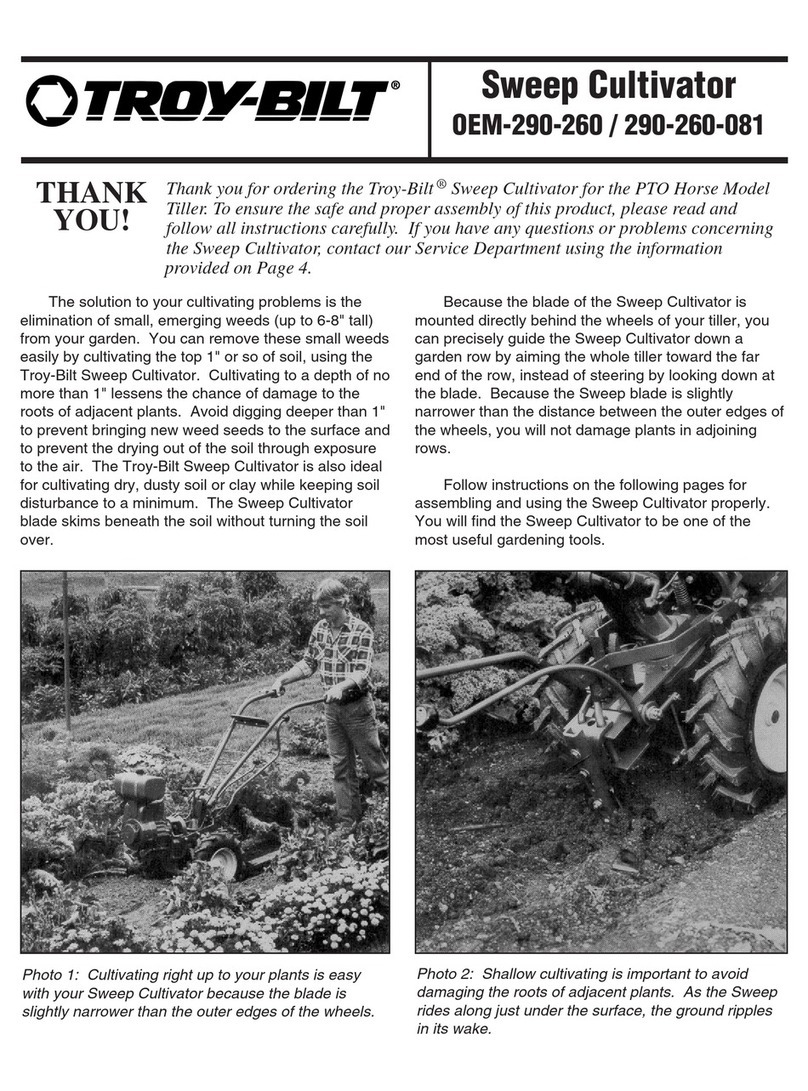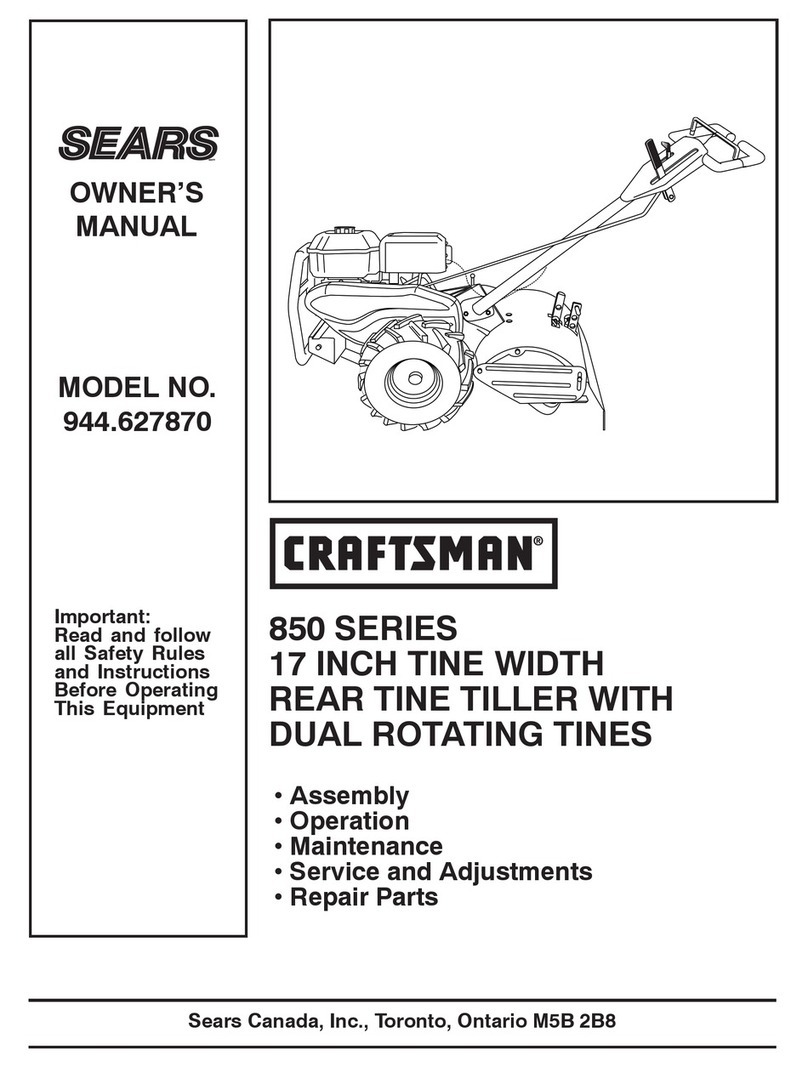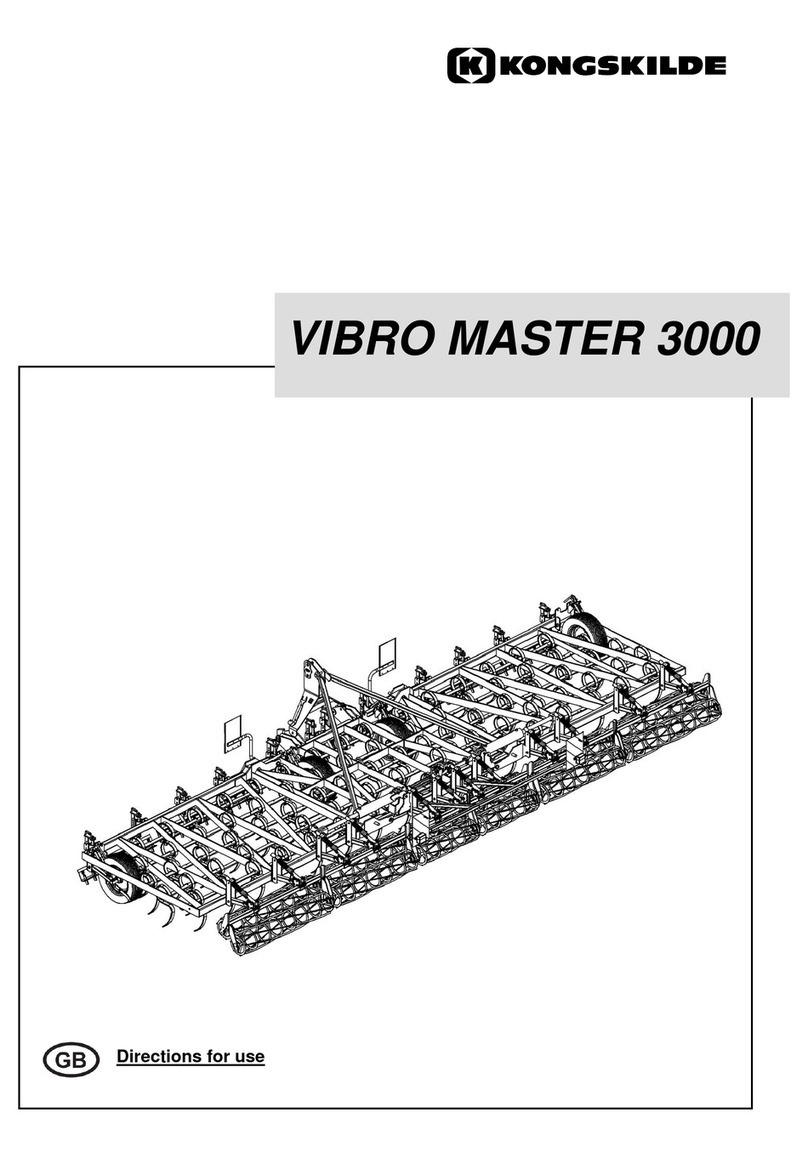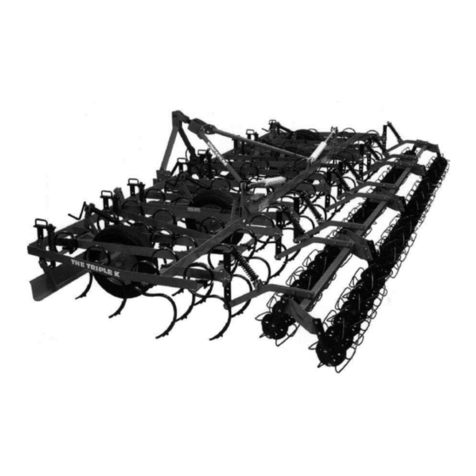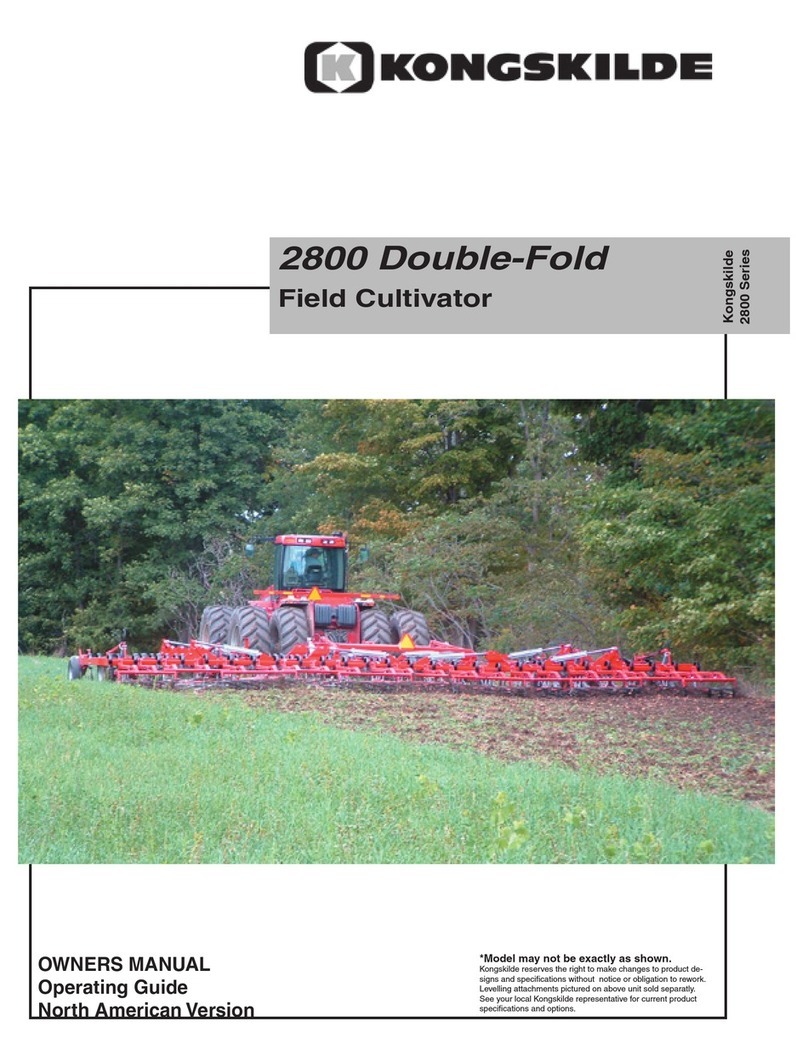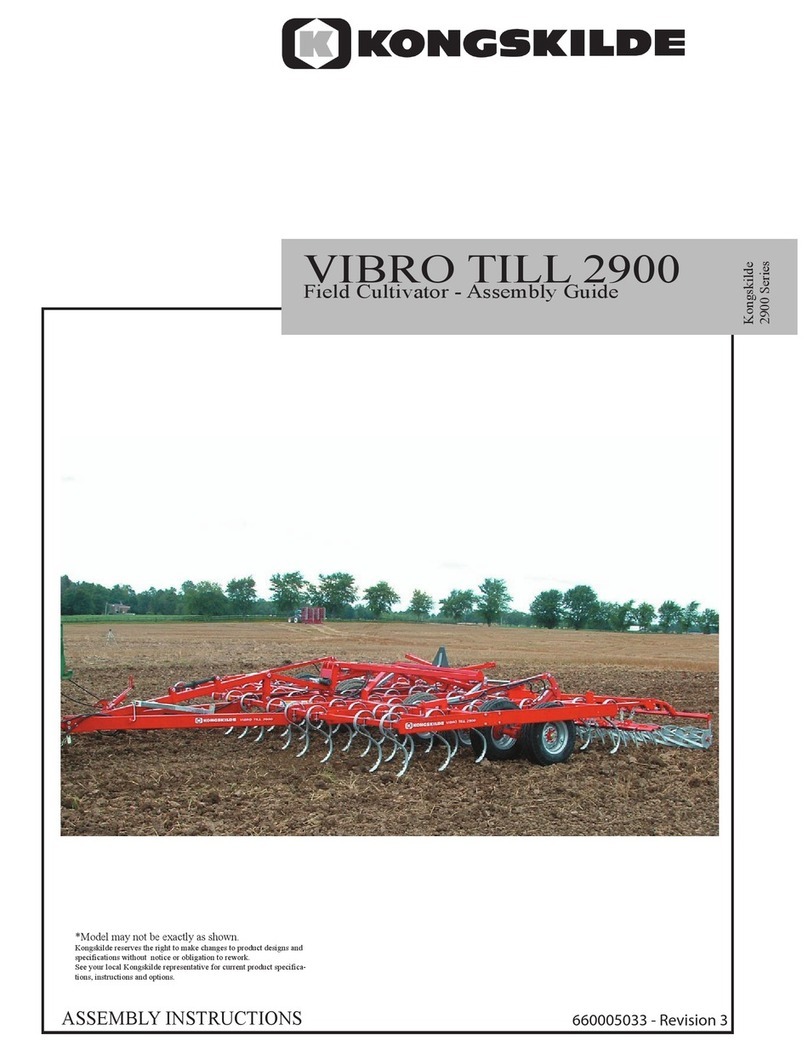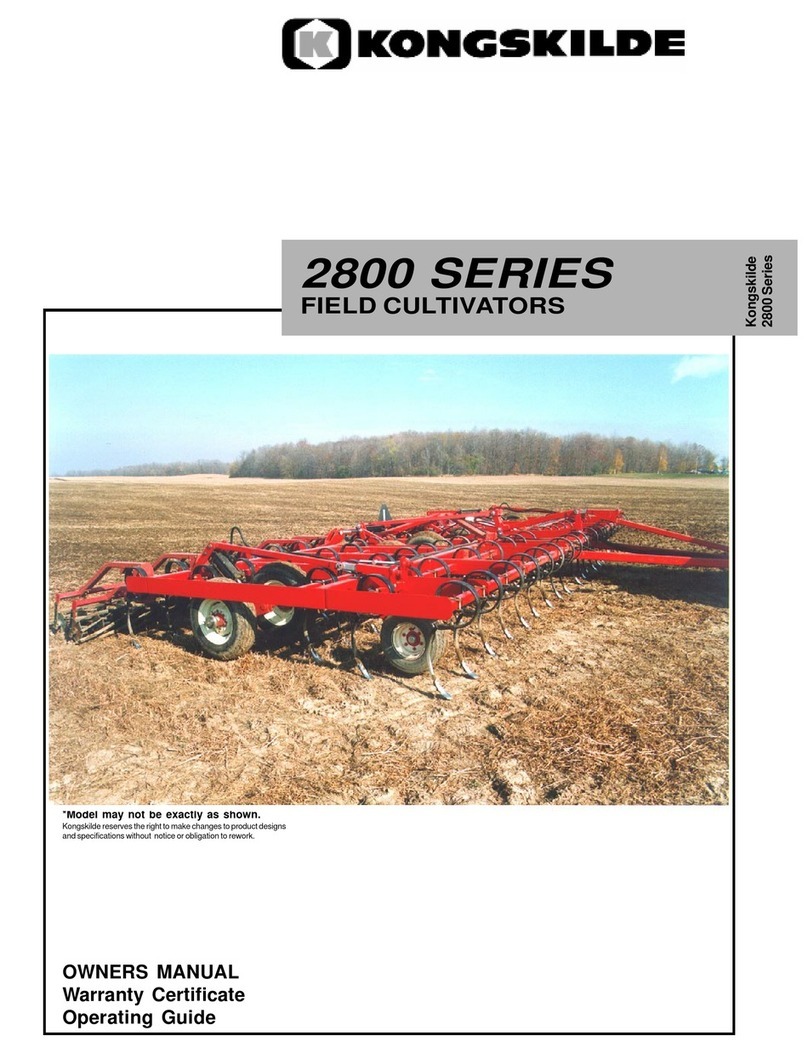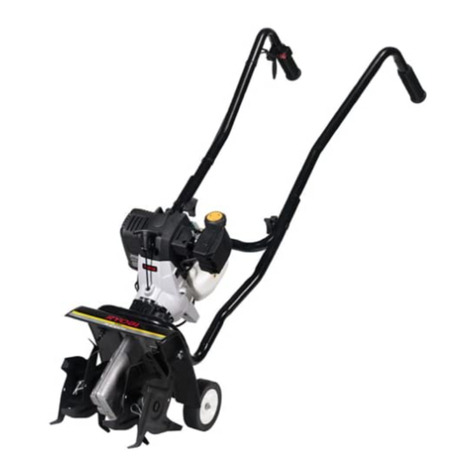
3
Introduction:
Please take the time to carefully read all the instruction booklets provided with your new Kongskilde
product. Once you are finished reading do not throw these guides out. Keep them for later review.
The "Spare Parts List" is referenced to by this guide. We suggest having it on hand during the assembly
process.
Accessories may have their own instruction guide. Please read the
relavent booklets for instructions on how to perform the installation
of accesories. (Harrows, light kit etc.)
Be sure to read and understand the "Owner's Manual" before operating
this equipment. It contains information about adjustment settings,
operating instructions and saftey precautions.
Please fill out and return the Owners Registration and Warranty Form
provided in the Owners Manual to activate the warranty.
Preassembly Instructions:
Assembly of Kongskilde products should only be undertaken by
authorized Kongskilde Dealers or an approved service provider with
the necessary tools, equipment and training for safe assembly of the
unit.
Frame components are heavy and somewhat awkward to handle.
Proper lifting devices such as overhead cranes, boom lifts or mobile
lift trucks should be used at all times when moving or handling the
large frame components.
Proper steel assembly stands or support jacks should also be used
to support the frame components, preventing them from falling.
Recommended assembly tools include:
A full set of standard open or box end wrenches and sockets; assorted sizes of pin punches; a heavy
hammer and/or sledge hammer; a pry bar; a large adjustable wrench; and pair of visegrip or similar
type pliers.
Optional tools could include an all purpose jack and a good quality air or electric drive impact tool
with heavy drive sockets.
The assembly area should be should be large enough to allow workers and equipment to move around
freely during assembly of the unit. For example; to fully assemble a 2800-80 with 8m working width,
a minimum area of 10m x 11m with an overhead clearance (wing fold) of 5m is needed (10m x 11m
x 5m)



